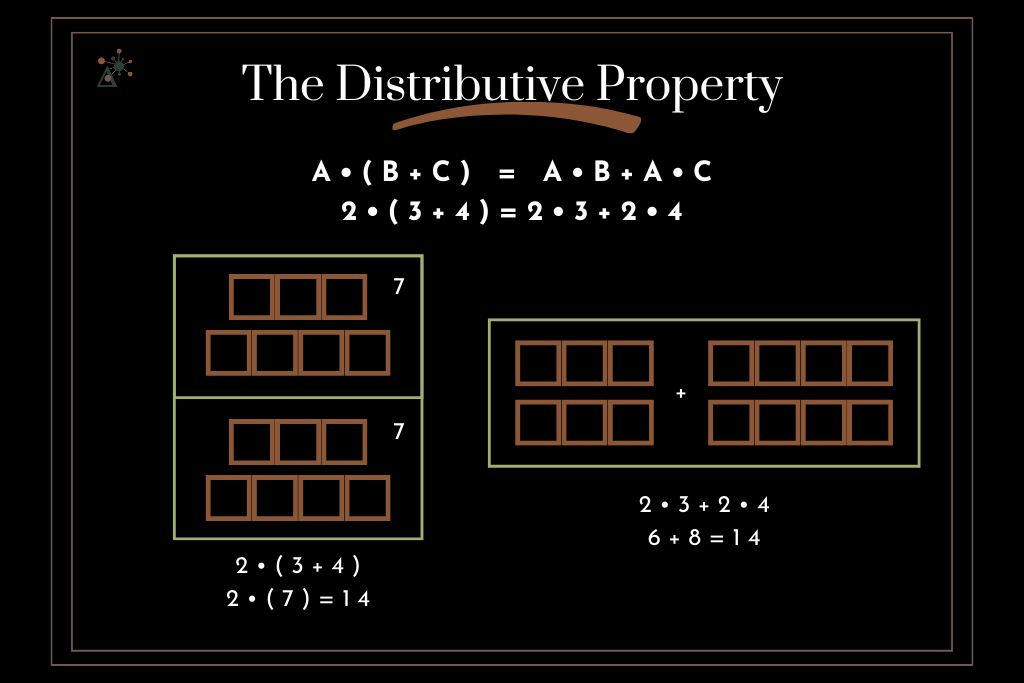Understanding the Properties of Operations
In mathematics, there are four basic operations: addition, subtraction, multiplication, and division. Each of these operations has associated properties that provide essential mathematical rules, helping us understand how numbers behave. These properties lay the foundation for many algebraic concepts.
Properties of Operations
Closure Property
The Closure Property of Addition: If a and b are real numbers, then a+b is also a real number.
Example: If a = 3 and b = 5, then 3 + 5 = 8, which is a real number.The Closure Property of Multiplication: If a and b are real numbers, then a⋅b is also a real number.
Example: If a = 4 and b = 2, then 4 • 2 = 8, which is a real number.
Commutative Property
The Commutative Property of Addition: For real numbers a and b, a + b = b + a.
Example: 2 + 3 = 3 + 2. Both equal 5.
The Commutative Property of Multiplication: For real numbers a and b, a • b = b • a.
Example: 4 • 5 = 5 • 4. Both equal 20.
Note: The commutative property applies only to addition and multiplication. In subtraction and division, reversing the order does not yield the same result.
Associative Property
The Associative Property of Addition: For real numbers a, b, and c, (a + b) + c = a + (b + c).
Example: (2 + 3) + 4 = 2 + (3 + 4). Both equal 9.The Associative Property of Multiplication: For real numbers a, b, and c, (a • b) • c = a • (b • c).
Example: (2 • 3) • 4 = 2 • (3 • 4). Both equal 24.
Note: The associative property concerns the grouping of numbers. In subtraction and division, changing the grouping alters the result.
Distributive Property
The Distributive Property of Multiplication: For real numbers a, b, and c, a • (b + c) = a•b + a•c.
Example: 2 • (3 + 4) = 2•3 + 2•4. Both equal 14.
Identity Property
The Additive Identity Property: For any real number a, a + 0 = a.
Example: 5 + 0 = 5.The Multiplicative Identity Property: For any real number a, a • 1 = a.
Example: 7 • 1 = 7.
Inverse Property
The Additive Inverse Property: For any real number a, a + (-a) = 0.
Example: 5 + (-5) = 0.The Multiplicative Inverse Property: For any real number a (where a≠0), a • (1/a) = 1.
Example: 4 • (¼) = 1.
Equality Property
The Addition Equality Property: For real numbers a, b, and c, if a = b, then a + c = b + c.
Example: If 2 = 2, then 2 + 3 = 2 + 3.The Multiplication Equality Property: For real numbers a, b, and c, if a = b, then a • c = b • c.
Example: If 3 = 3, then 3 • 2 = 3 • 2.
Additional Properties of Operations
The Reflexive Property: For any real number a, a = a.
Example: 5 = 5.The Zero Multiplicative Property: For any real number a, a • 0 = a.
Example: 9 • 0 = 0.The Division Property of Zero: For any real number a (where a≠0), 0/a = 0.
Example: 0/5 = 0.The Division by Zero Property: Division by zero is undefined.
Example: a/0 does not exist.
Conclusion
Understanding these properties helps us perform operations effectively and can be applied to solve problems algebraically. Check out our next post to see how we can use these properties to solve single-step equations!



